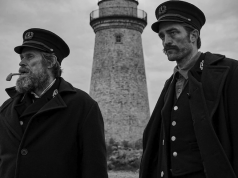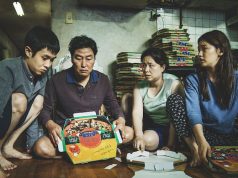I usually like to know what I’m talking about, or at least give the impression that I do, but I’m going to tell you something about “The Fountain” up front: I don’t know what to make of it. I was utterly absorbed in watching it, yet when it was over I had no idea what had happened.
It has Hugh Jackman and Rachel Weisz playing Thomas and Isabel in three different time periods: around 1500 (the time of the Spanish Inquisition), present-day, and some point in the distant future. I believe the Thomas of 2006 is the same person, miraculously un-aged, as the Thomas of hundreds of years from now, but I would not stake my reputation on that. He doesn’t seem to be the same Thomas as the Inquisition Thomas, nor is it the same Isabel … but I’m not totally sold on either of those points, either.
Thomas the conquistador (OK, Tomás), working for Queen Isabella of Spain, is searching for the mythical Fountain of Youth when he is attacked by Mayans in one of their holy pyramids. In the present day, Thomas is a medical researcher looking for a way to cure his wife Isabel’s terminal cancer. In the future, he is bald and sitting by a tree that floats through space in a bubble.
These three stories are told simultaneously, cutting from one to another, and while I could probably describe them in a less nonsensical fashion than I have just done, that might defeat the purpose. The enjoyment of the movie is in being caught up in its single-minded devotion to its own vision, not in completely understanding what that vision is.
It’s the work of Darren Aronofsky, whose “Pi” I admire and whose “Requiem for a Dream” I consider one of very best films of the decade. That was in 2000, and “The Fountain” is his first movie since then. It’s taken him that long to get the project together. The special effects make it blockbuster expensive, but it’s not the kind of movie that brings in blockbuster crowds. It features two actors playing multiple characters (or maybe the same character) in three different time periods, with each story overlapping the other two in strange ways. You can see why studios weren’t too eager to fund it.
As in “Pi” and “Requiem,” Aronofsky has an astonishing knack for putting together bizarre, entrancing images, beautifully filmed by cinematographer Matthew Libatique and scored by composer Clint Mansell. (Both men are Aronofsky regulars.) He usually shoots scenes either head-on or exactly in profile, with few three-quarter shots or other jaunty angles. The head-on shots, in particular, give the film an otherworldly feel simply because that angle — with the actors looking directly at the camera — is so rarely used in movies. Even if you knew nothing else about the film, you’d know it was unusual for that reason alone.
“The Fountain” strikes me as a rumination on life and death, and on the latter’s vital role as part of the former. The film has a “plot,” yes, but even if I understood all the details of it, it would be beside the point. The point is how it makes you feel. It’s less a narrative than a tone poem, designed to envelop you in its emotions rather than tell you a story.
B (1 hr., 36 min.; )





